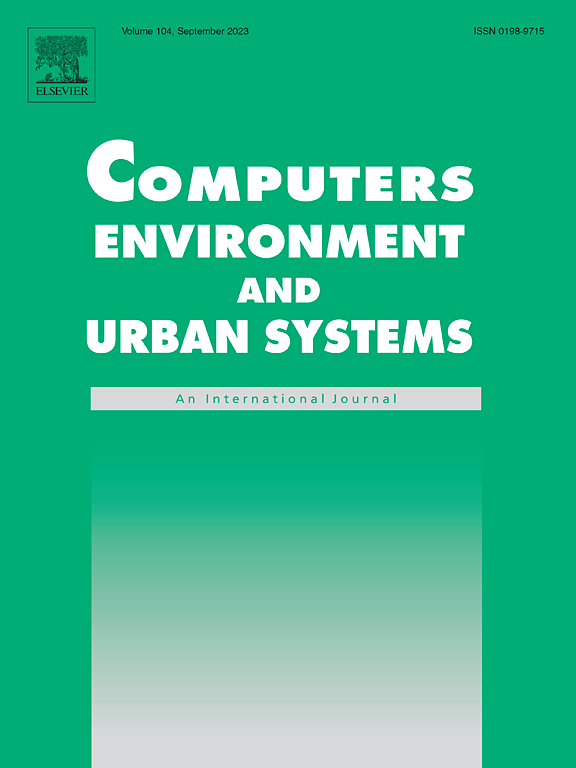Housing segregation in Chinese major cities: A K-nearest neighbor analysis of longitudinal big data
IF 8.3
1区 地球科学
Q1 ENVIRONMENTAL STUDIES
Computers Environment and Urban Systems
Pub Date : 2025-07-01
DOI:10.1016/j.compenvurbsys.2025.102326
引用次数: 0
Abstract
Most studies on residential segregation in China have primarily relied on decennial population census data, which lacks the granularity and timeliness needed to capture segregation dynamics with higher frequency. Drawing on georeferenced housing market transaction data between 2012 and 2023 in Shanghai and Beijing, and employing fine-grained spatial segregation analysis techniques, including k-nearest neighbor approaches (k−NN) and modifiable grids, we find that housing segregation by price and size increased between 2012 and 2018, followed by a decline thereafter, particularly in the larger-sized and higher-priced market segments. While segregation levels are generally comparable between the two cities, Shanghai exhibits higher segregation for the top 20 % of apartments, while Beijing shows greater segregation for the bottom 20 %. Segregation is highest for prices, followed by rents, with housing size showing the lowest segregation. Expanding the analysis to 11 major Chinese cities, we suggest that high and rising housing prices are associated with increasing segregation, particularly in cities with lower initial segregation. Methodologically, this paper demonstrates that leveraging big transaction and listing data, alongside utilizing fine-grained spatial analysis, can advance our understanding of urban inequalities.
中国主要城市的住房隔离:纵向大数据的k近邻分析
大多数关于中国居住隔离的研究主要依赖于十年一次的人口普查数据,缺乏更高频率捕捉隔离动态所需的粒度和及时性。利用2012年至2023年上海和北京的地理参考住房市场交易数据,并采用包括k-近邻方法(k - NN)和可修改网格在内的细粒度空间隔离分析技术,我们发现,2012年至2018年期间,价格和规模的住房隔离有所增加,之后有所下降,特别是在规模较大和价格较高的细分市场。虽然两个城市的隔离程度大致相当,但上海的前20%的公寓隔离程度更高,而北京的后20%的公寓隔离程度更高。房价的隔离程度最高,其次是租金,住房面积的隔离程度最低。将分析扩展到中国11个主要城市,我们认为高房价和不断上涨的房价与日益加剧的隔离有关,特别是在最初隔离程度较低的城市。在方法上,本文表明,利用大交易和上市数据,以及利用细粒度空间分析,可以促进我们对城市不平等的理解。
本文章由计算机程序翻译,如有差异,请以英文原文为准。
求助全文
约1分钟内获得全文
求助全文
来源期刊

Computers Environment and Urban Systems
Multiple-
CiteScore
13.30
自引率
7.40%
发文量
111
审稿时长
32 days
期刊介绍:
Computers, Environment and Urban Systemsis an interdisciplinary journal publishing cutting-edge and innovative computer-based research on environmental and urban systems, that privileges the geospatial perspective. The journal welcomes original high quality scholarship of a theoretical, applied or technological nature, and provides a stimulating presentation of perspectives, research developments, overviews of important new technologies and uses of major computational, information-based, and visualization innovations. Applied and theoretical contributions demonstrate the scope of computer-based analysis fostering a better understanding of environmental and urban systems, their spatial scope and their dynamics.
 求助内容:
求助内容: 应助结果提醒方式:
应助结果提醒方式:


